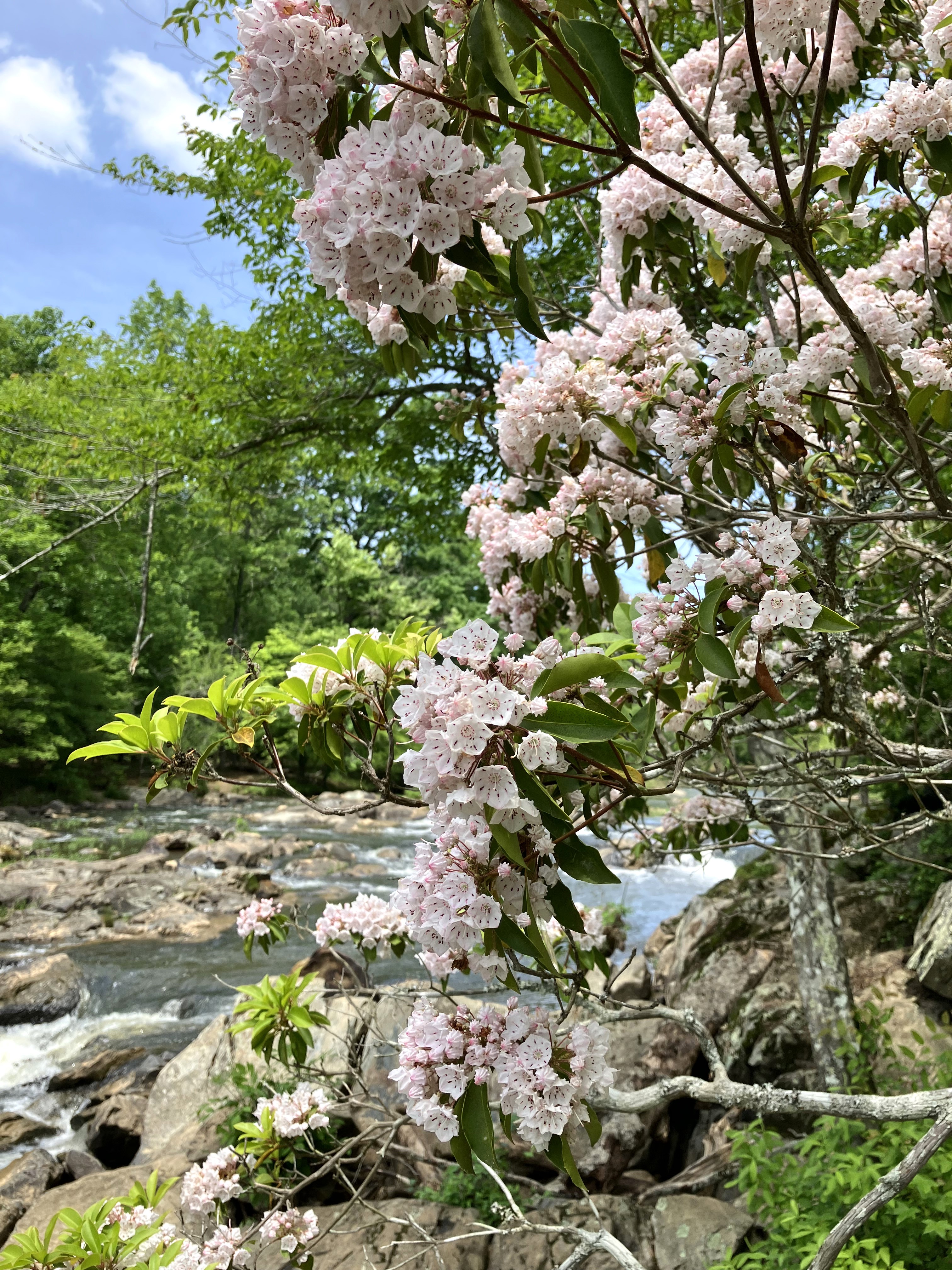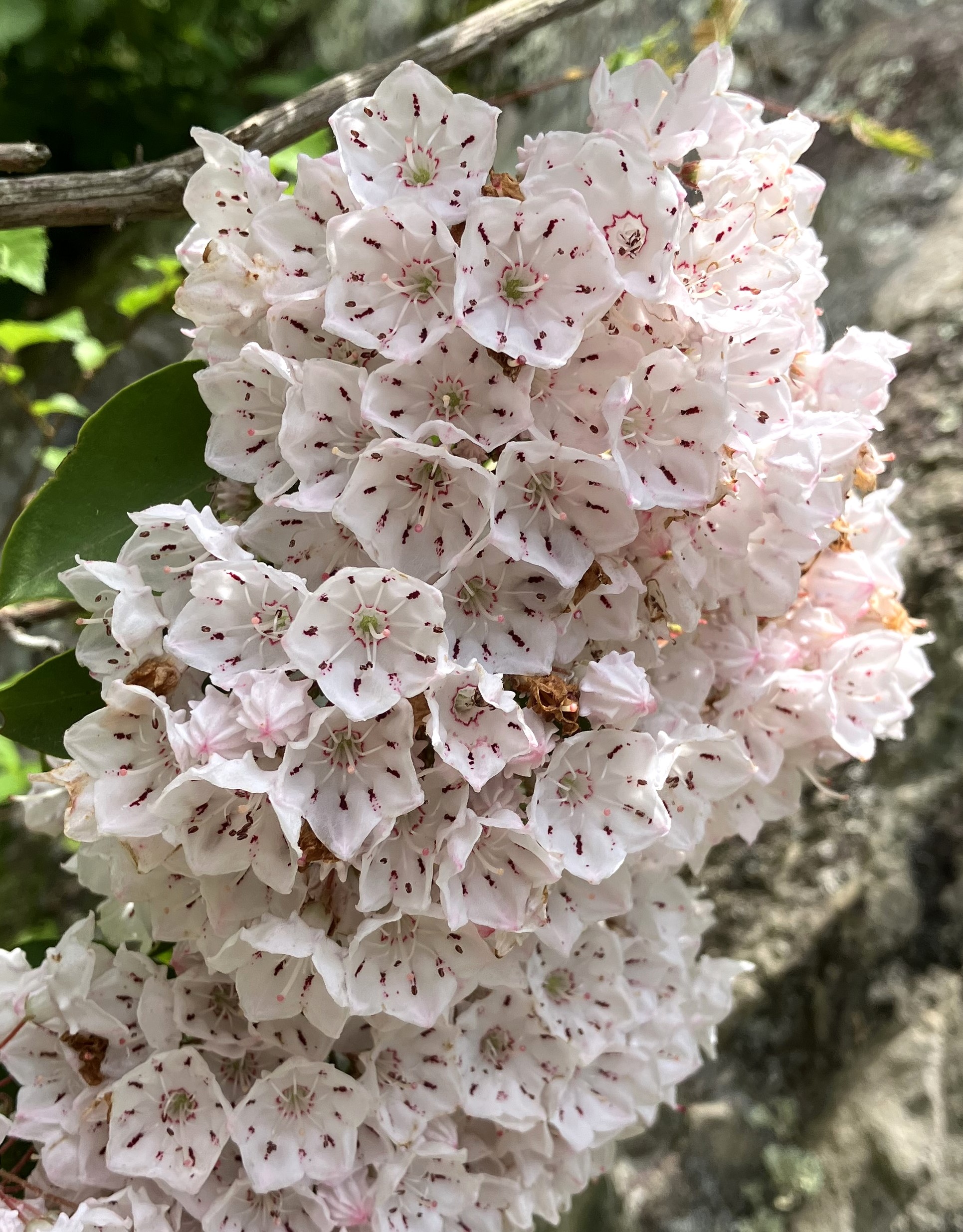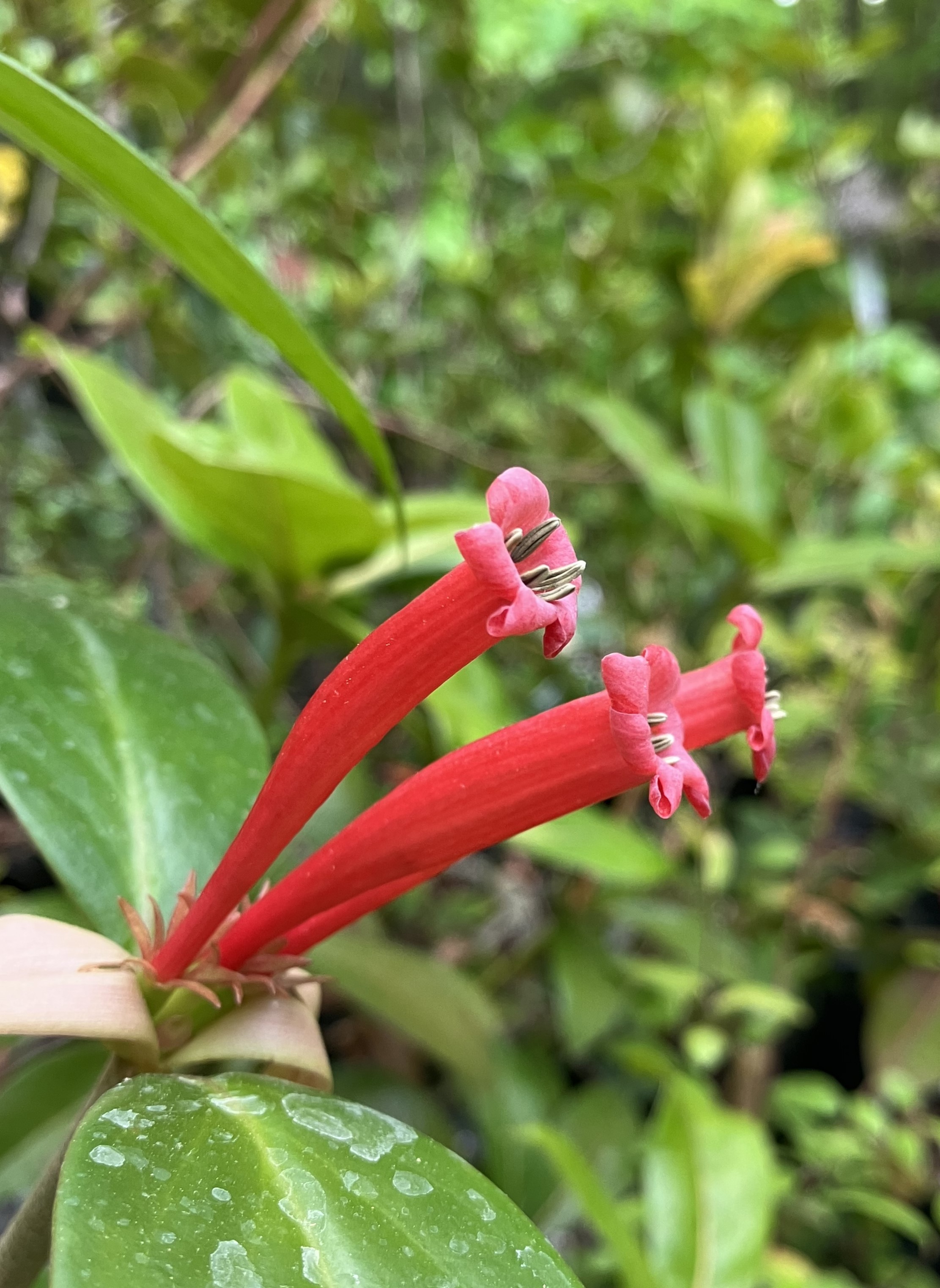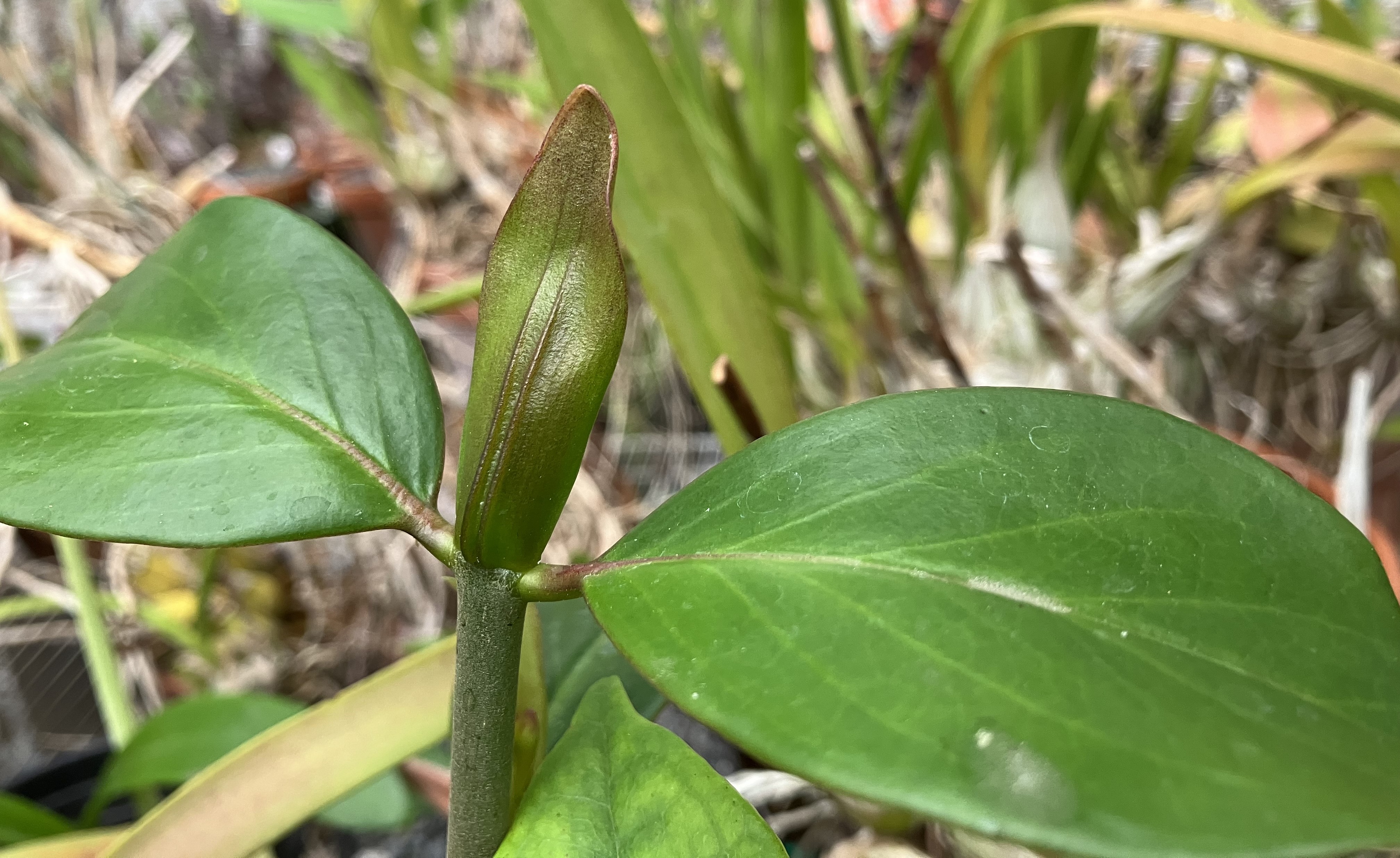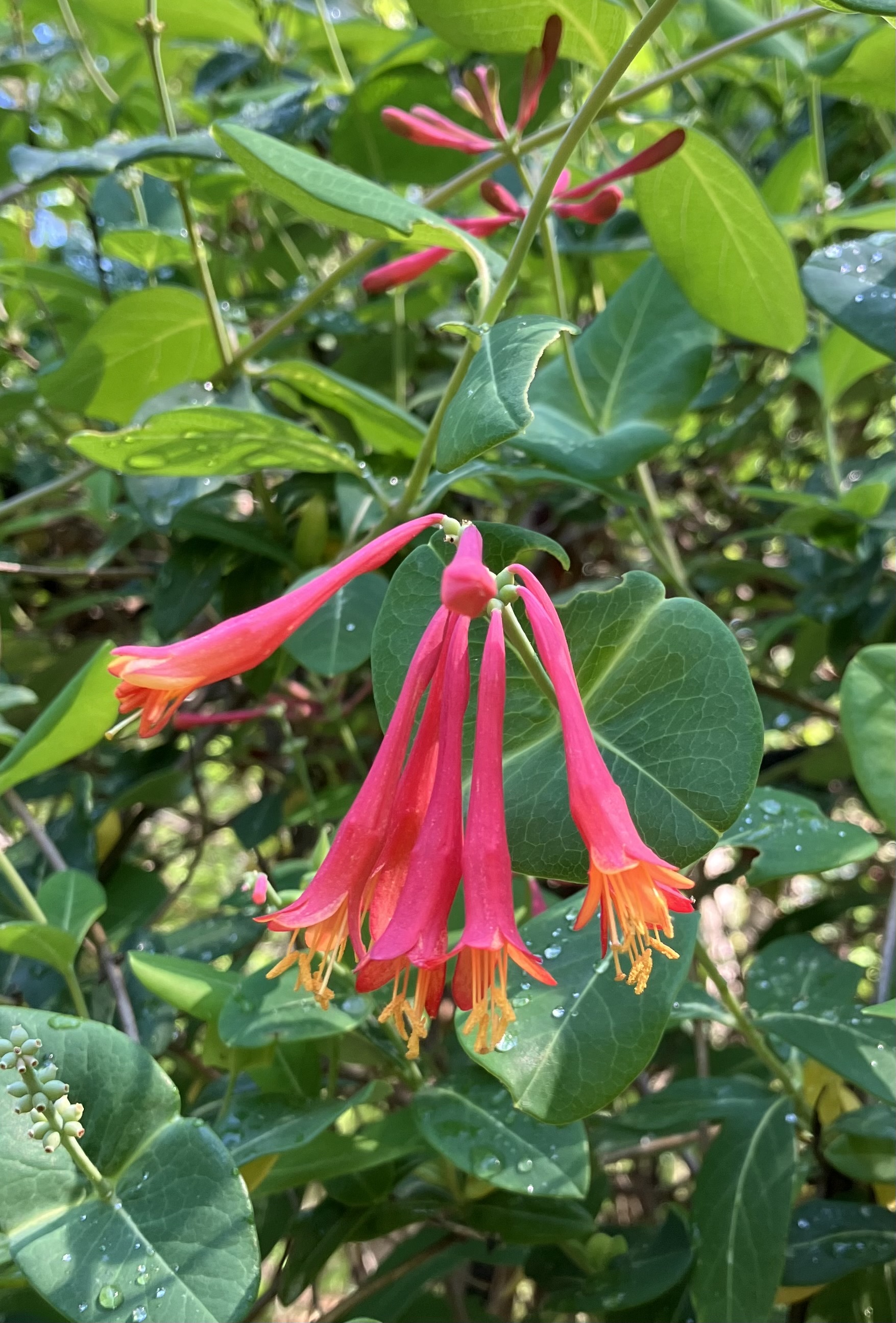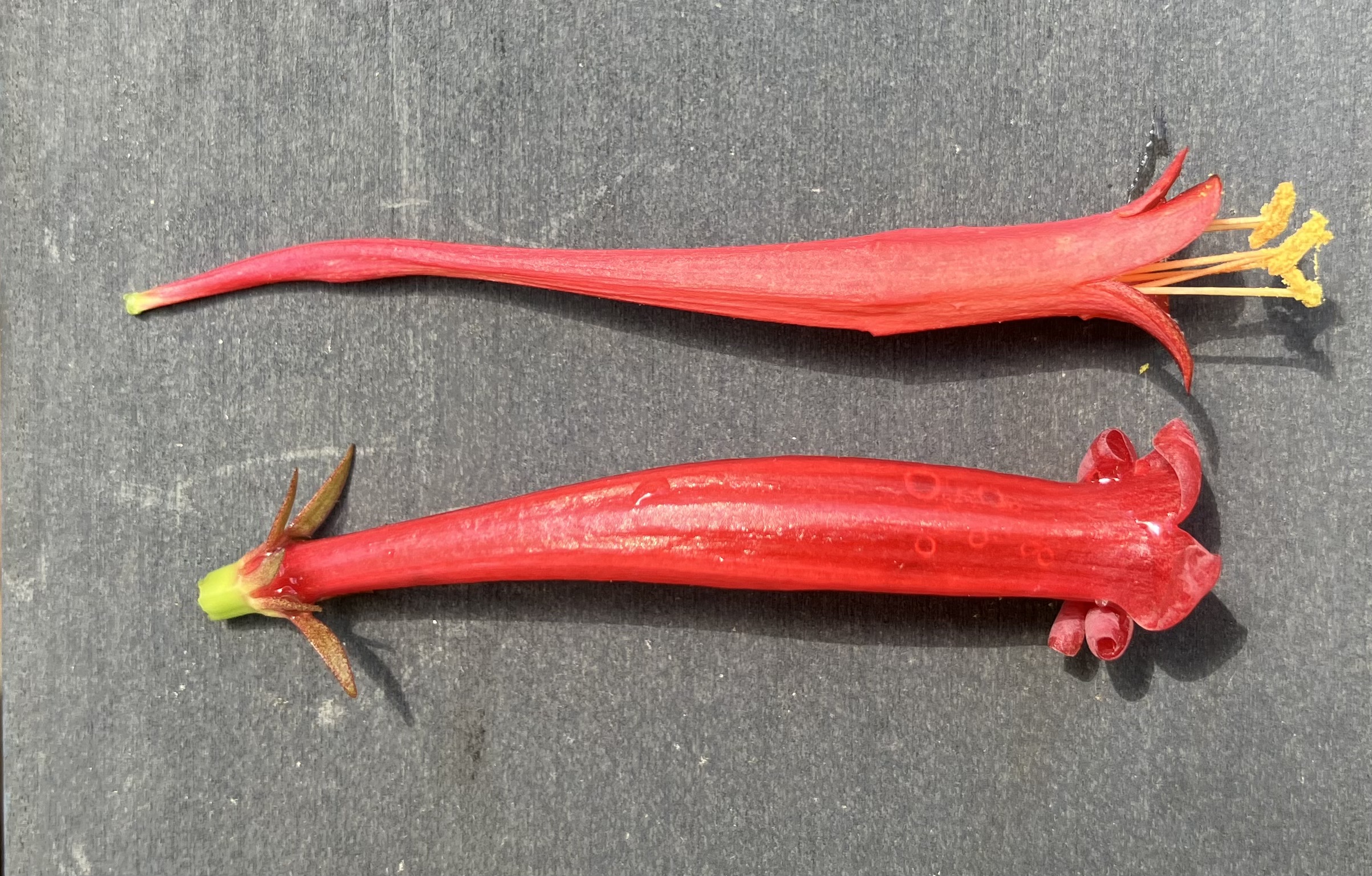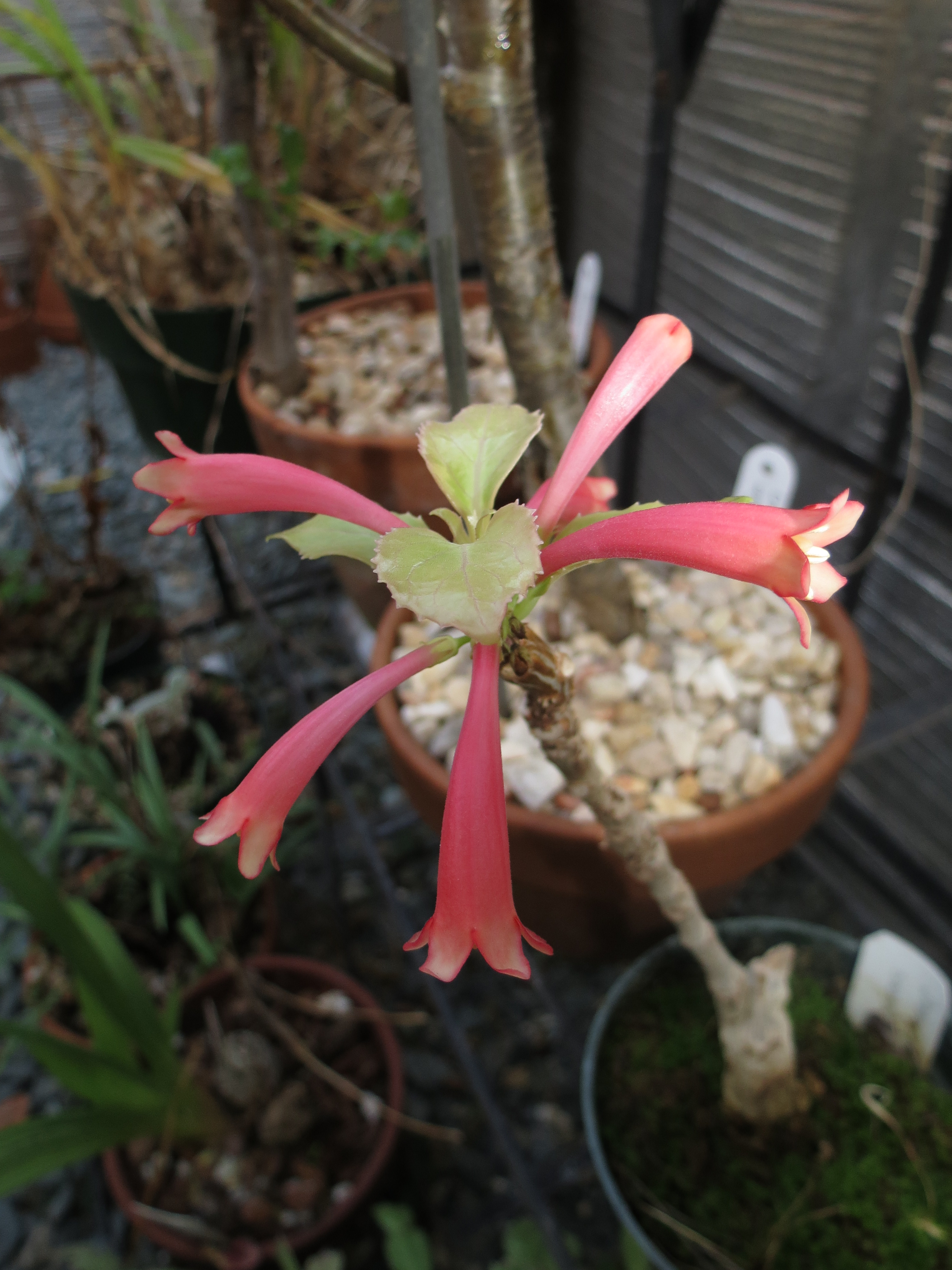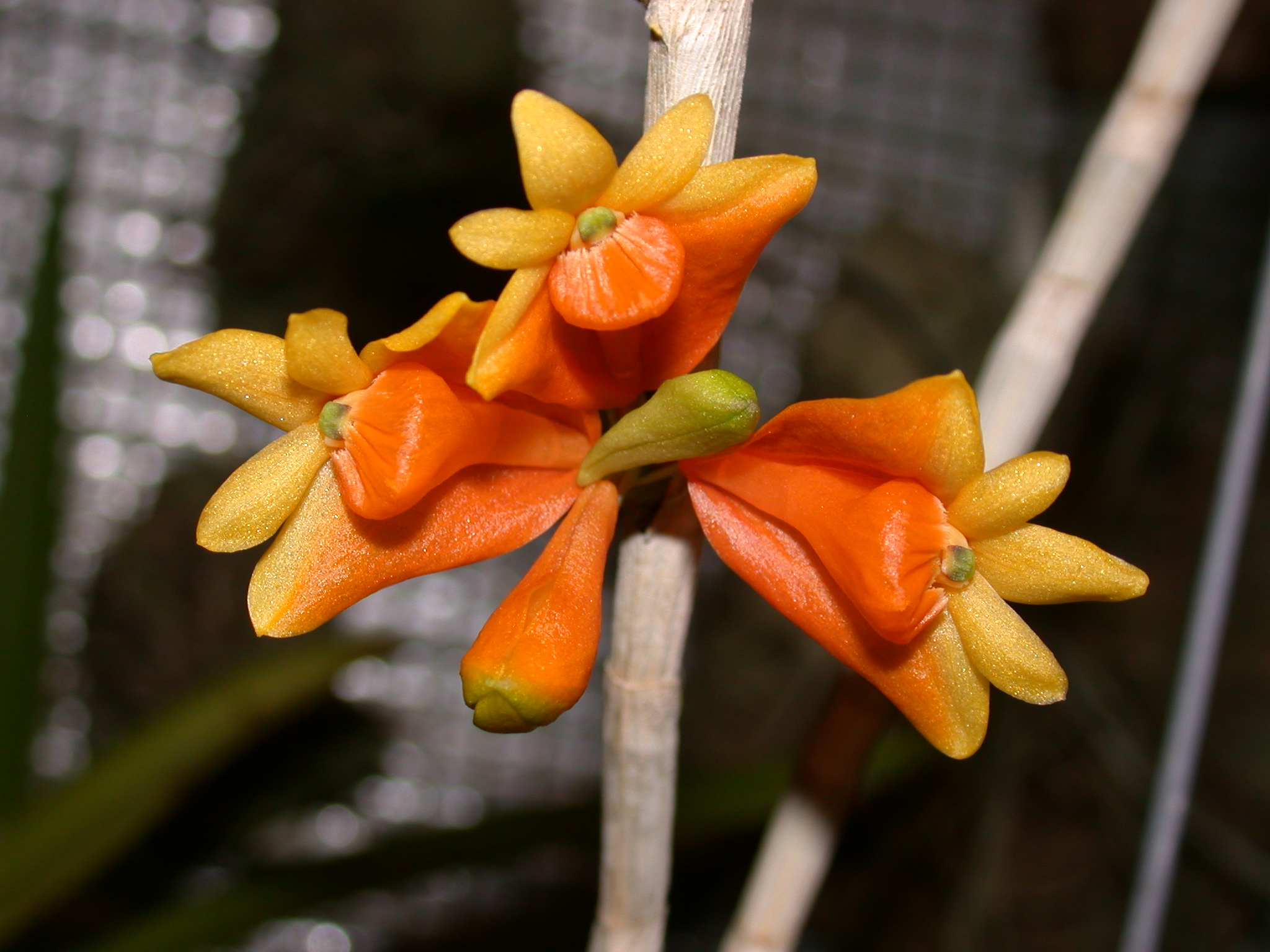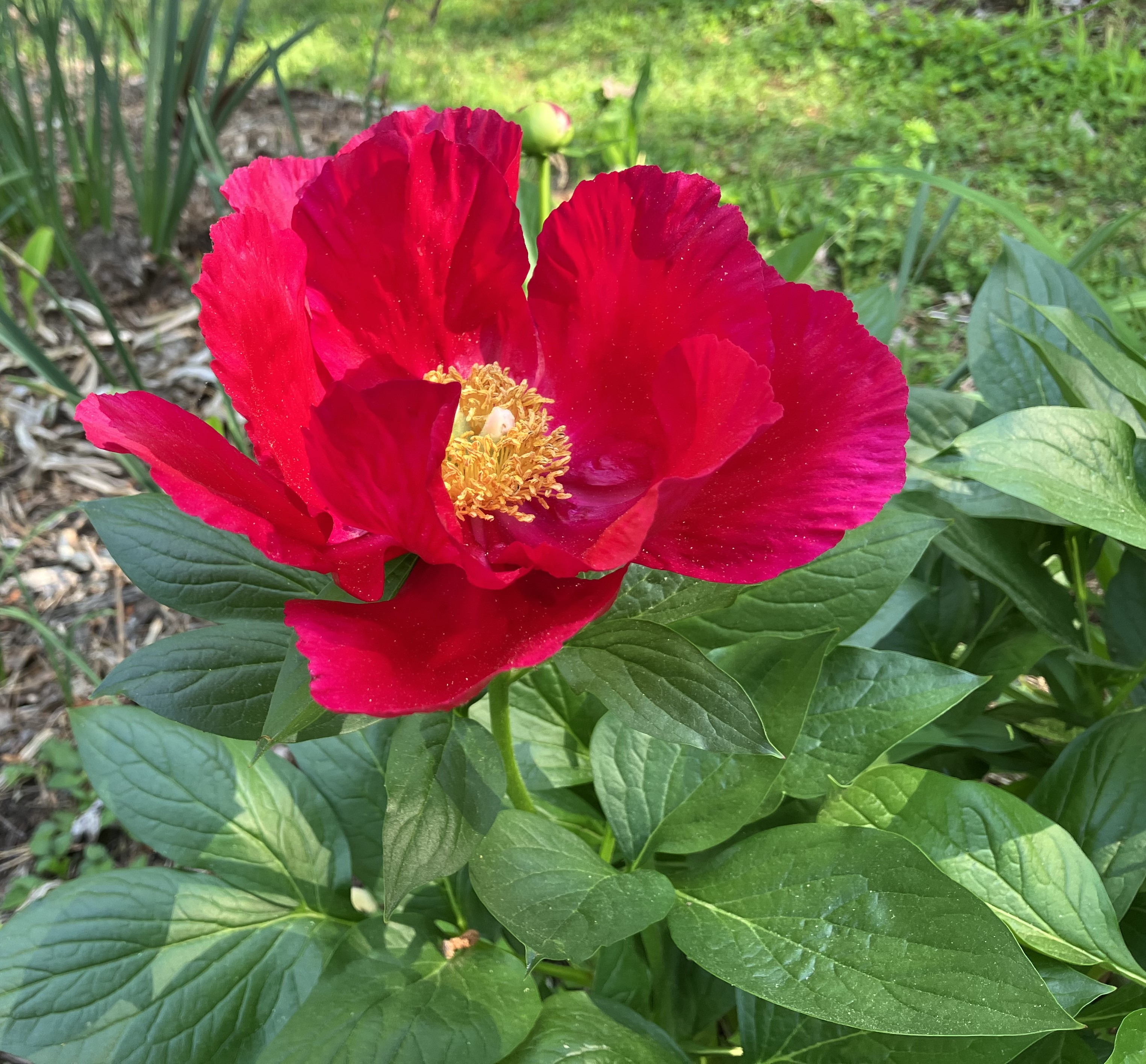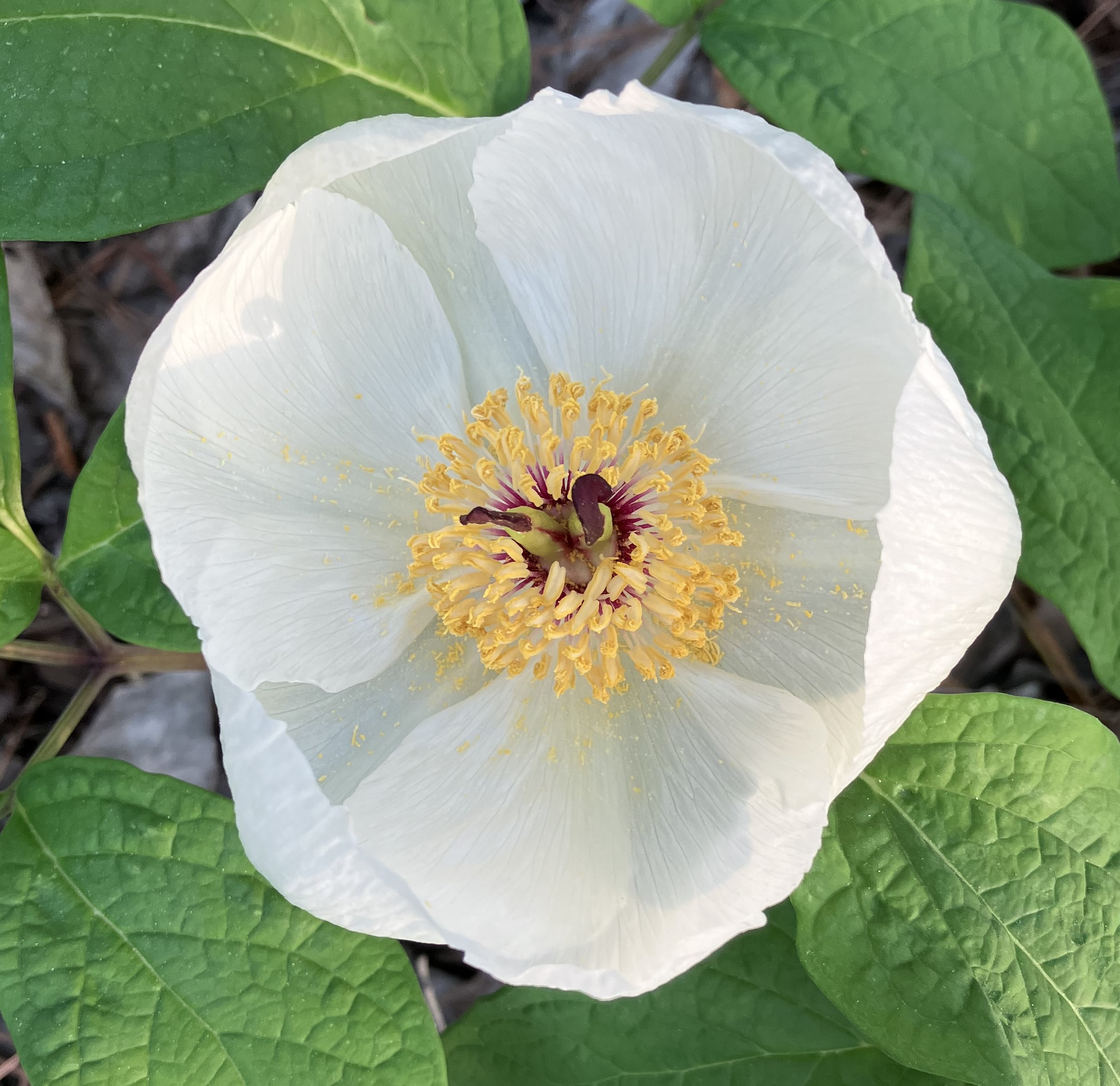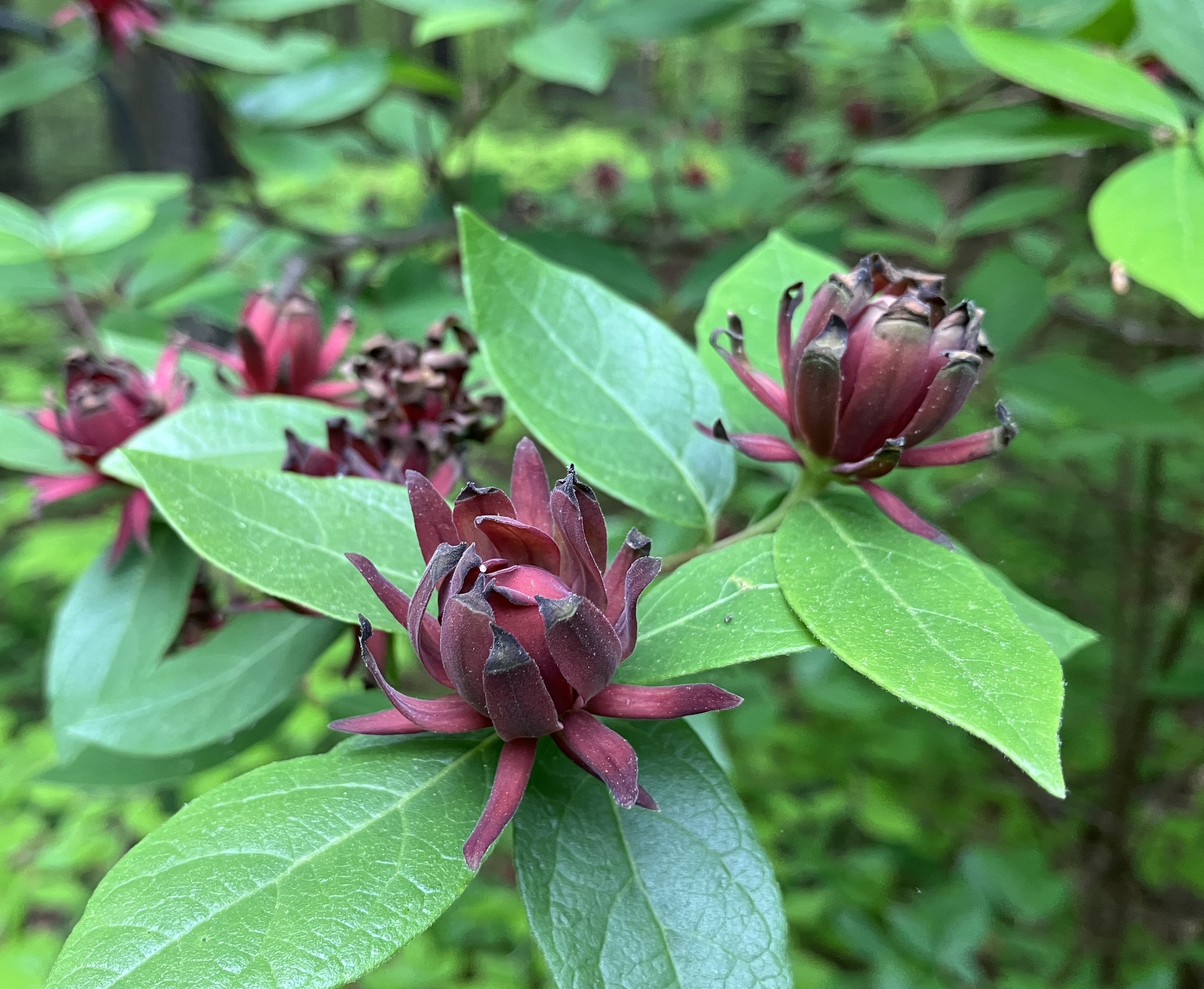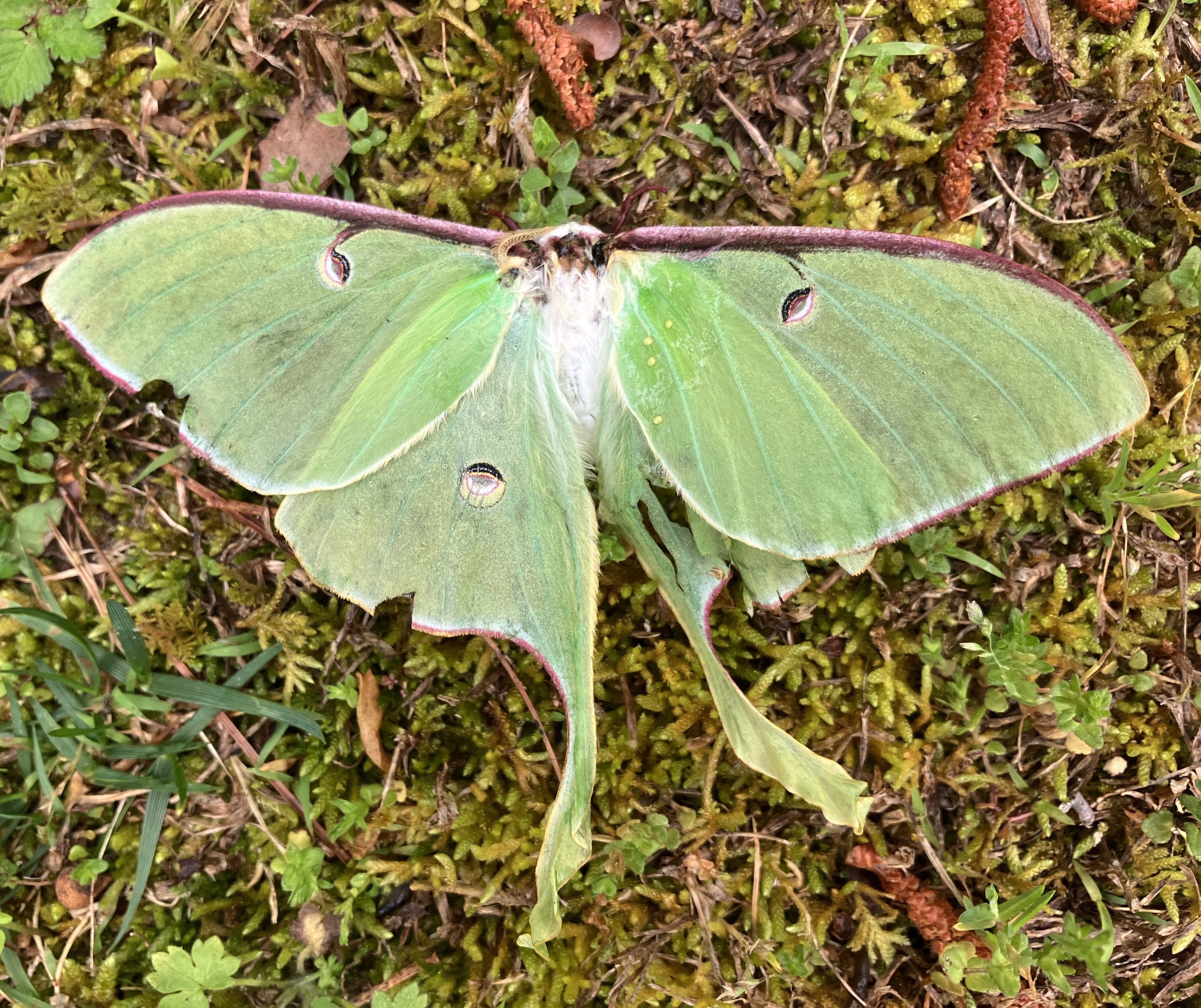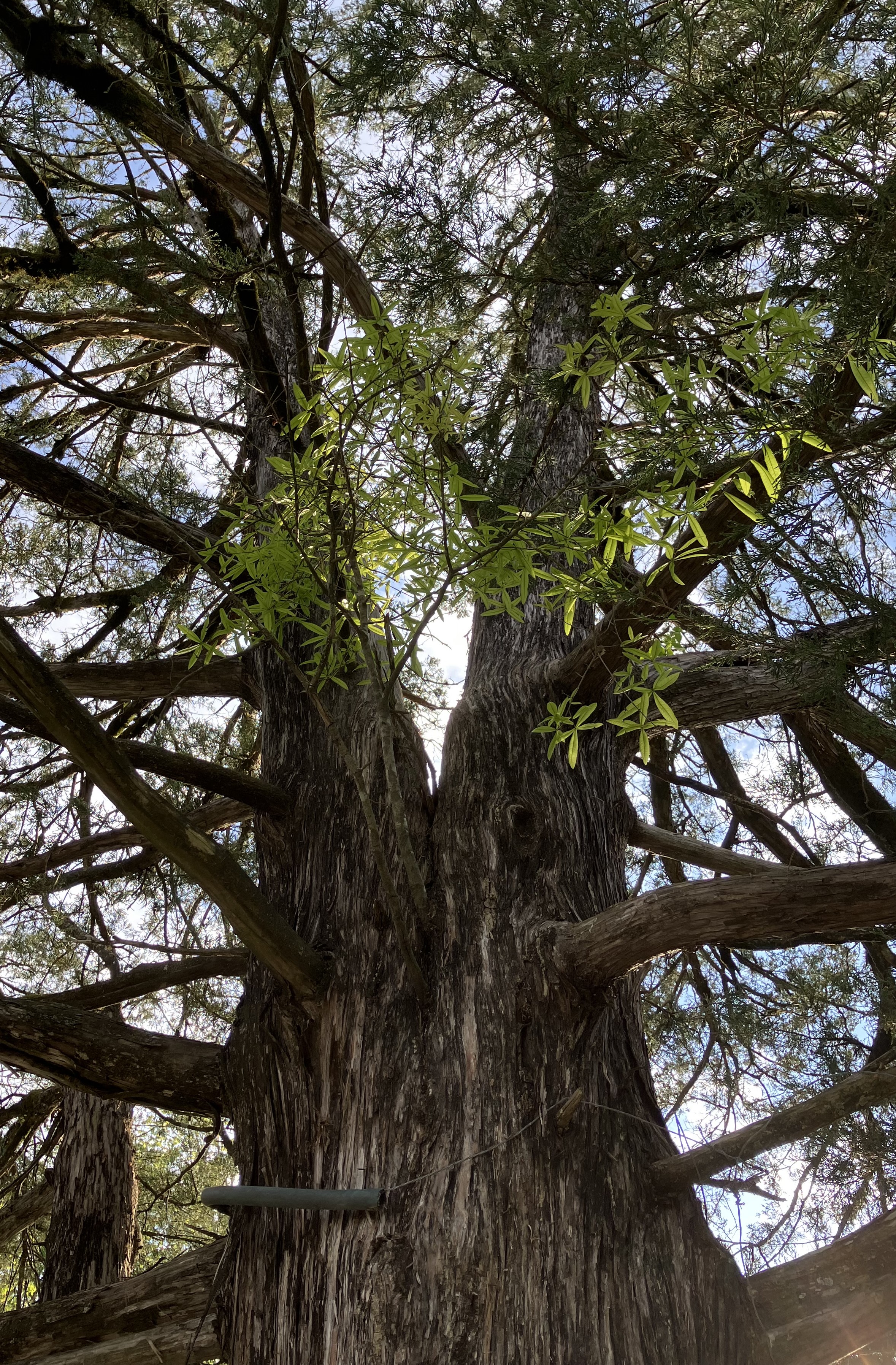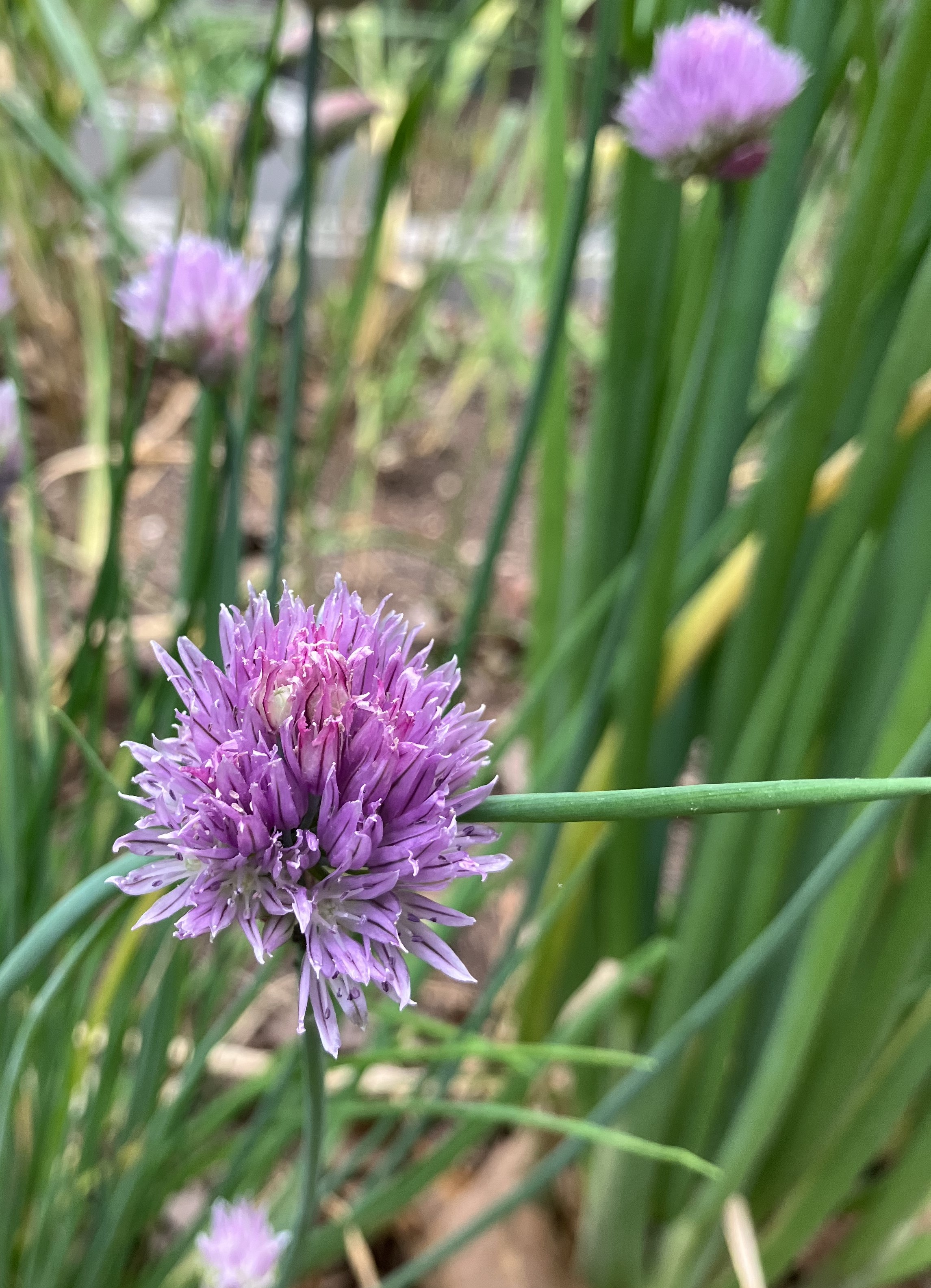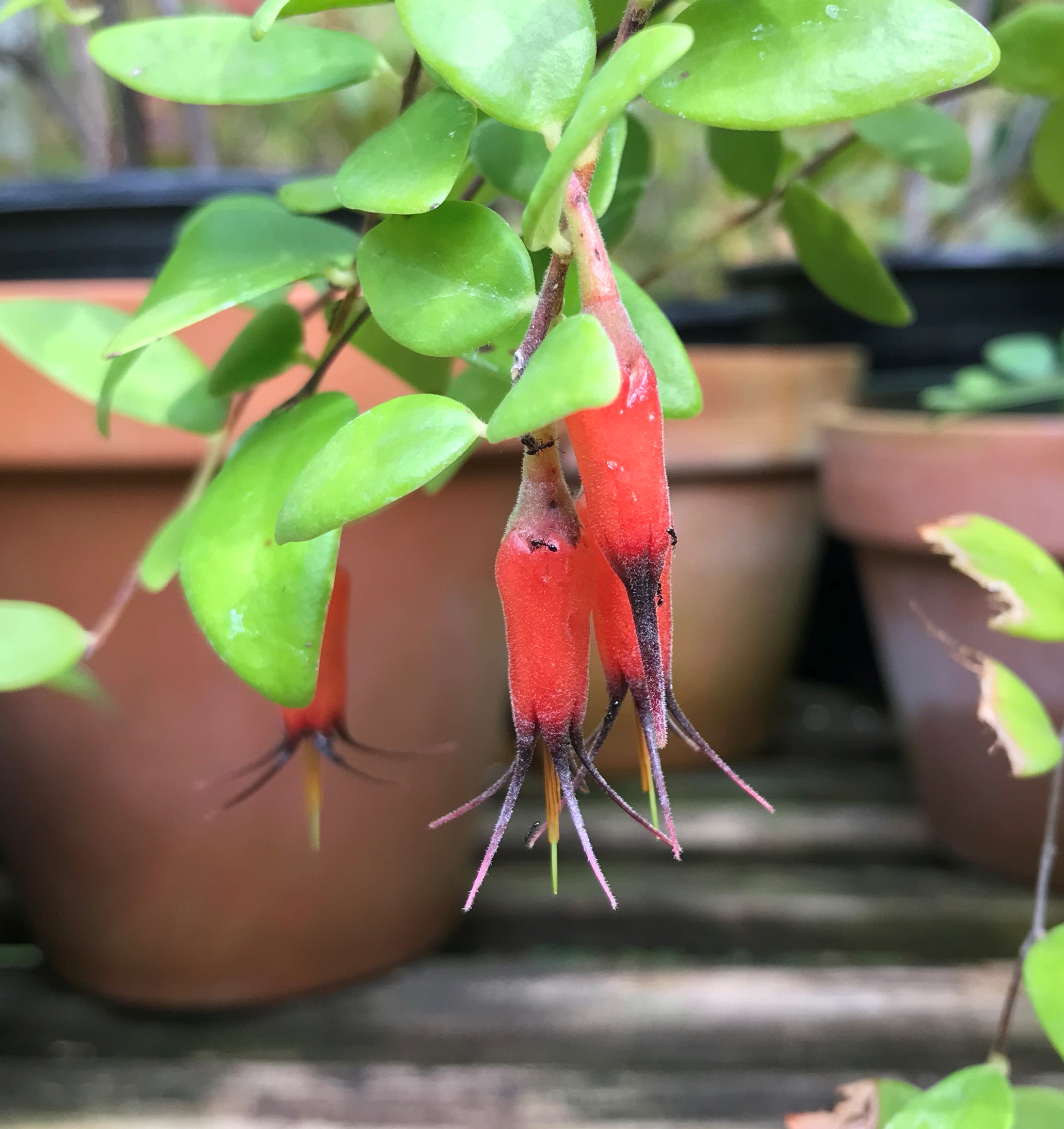It’s been a while since I have had the time to put together a Six on Saturday post. Spring is well underway here in the North Carolina piedmont. The early Narcissus have long finished flowering, and only late-flowering clones like ‘Thalia’ and ‘Golden Bells’ are still in bloom. Azaleas are just getting started. The native pinxter flower, Rhododendron periclymenoides is in full bloom, and the buds are opening on Florida flame azalea (R. austrinum). My hardy Calanthe and Bletilla orchids were hit hard by a freeze after a prolonged frost-free spell, and many of their new growths were turned to mush. It remains to be seen how many flowers they’ll make this year.
Here are six plants from the greenhouse and garden that I haven’t featured before.
1. Rhododendron ‘Aravir’
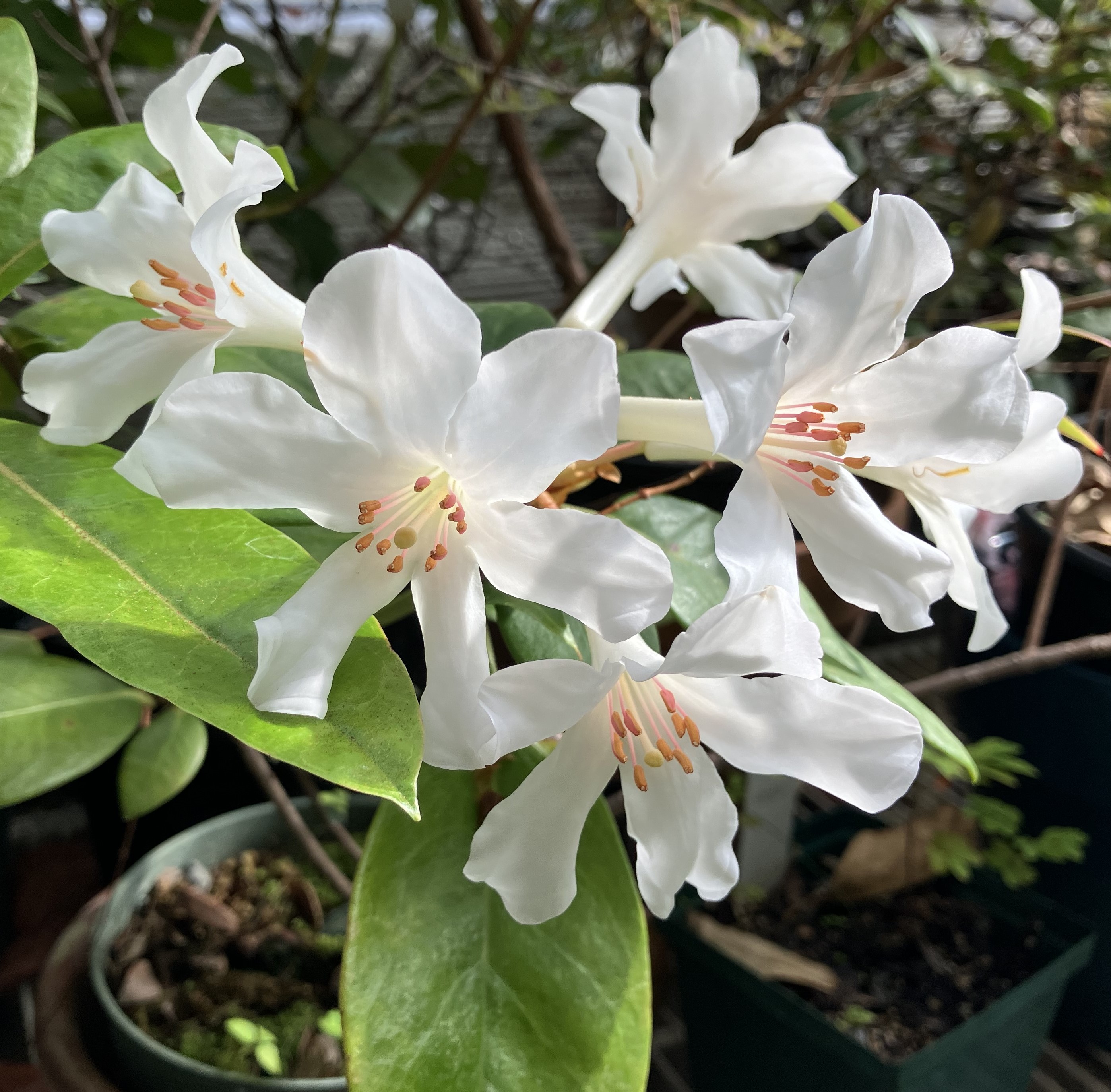
‘Aravir’ is another of the modern vireya (tropical Rhododendron) hybrids. Its parentage is R. konori x (‘Pink Delight’ x jasminiflorum), which may explain its similarity to the Victorian ‘Princess Alexandra’ (R. ‘Princess Royal’ x jasminiflorum). The parentage of ‘Pink Delight’ is unknown*, but it is supposedly an old Veitch hybrid, so probably similar to ‘Princess Royal’. I got this plant as an unrooted cutting about 2 1/2 years ago, and this is the first time I have seen it flower. I am currently experiencing (hopefully temporary) post-COVID anosmia, so I can’t say much about its fragrance. I can barely detect a scent, which probably means that it is very strongly scented. Like all vireyas, this plant is not frost-hardy. I grow it in the greenhouse in winter and outdoors under shade cloth in summer.
This is one of a group of vireya hybrids with names drawn from the Chronicles of Narnia. ‘Aravir’ refers to the Narnian morning star.
*Update 12/22/2023: The late John Swisher, a Floridian vireya grower, suggested that ‘Pink Delight’ was identical to Rhododendron ‘Taylori’, a well known Veitch hybrid (Vireya Vine #3). If so, R. ‘Aravir’ is a great grandchild of R. ‘Princess Alexandra’ with several doses of R. jasminiflorum and R. javanicum in its background:

2. Columnea crassifolia
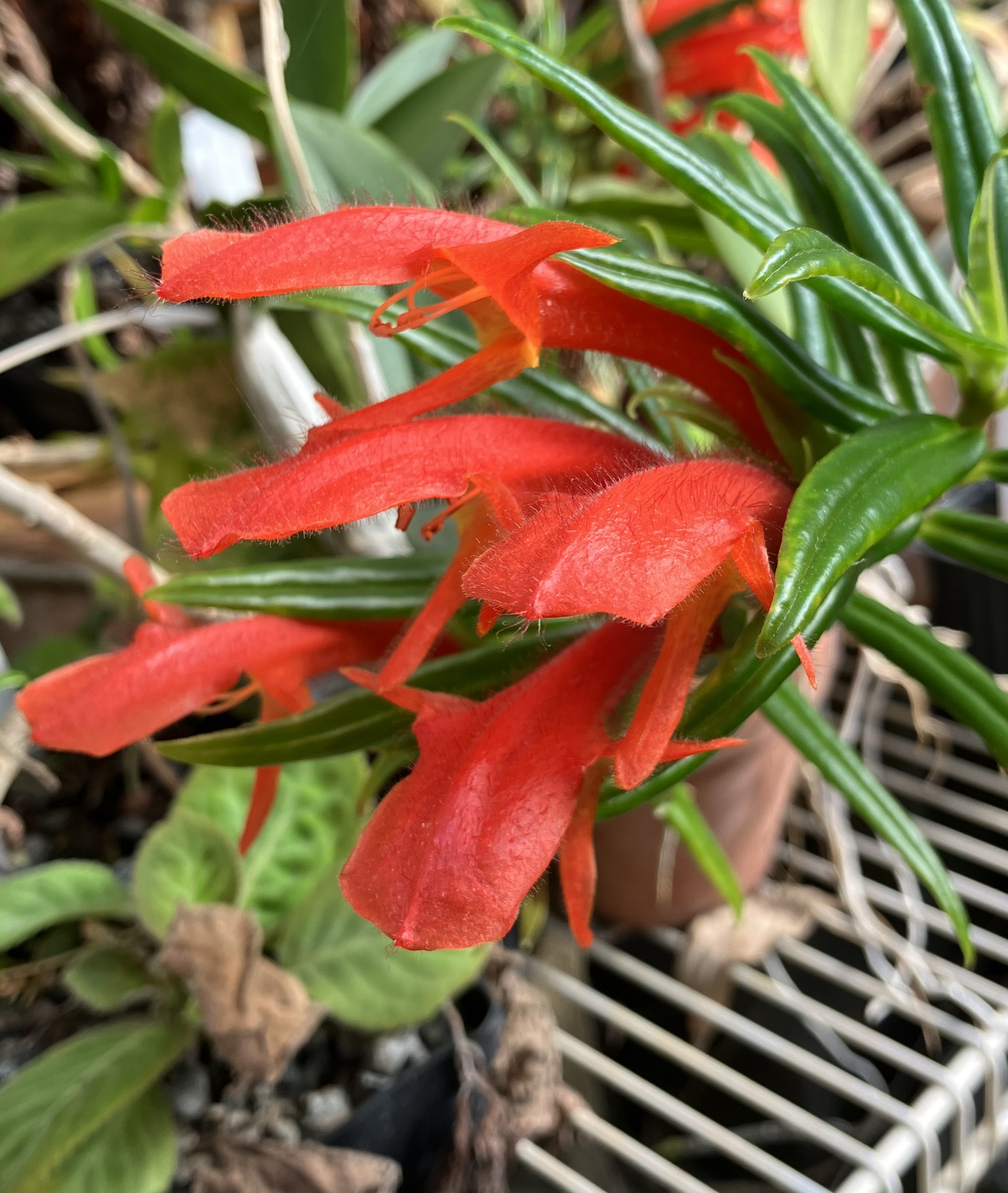
This beautiful epiphytic gesneriad is from Guatemala, so it is a greenhouse plant. The large hummingbird-pollinated flowers are similar to its relative C. microcalyx (syn. gloriosa), but while the stems of C. microcalyx hang limp or creep along a surface, those of C. crassifolia are rigid. This plant flowers most of the winter and on-and-off during the summer. Like R. ‘Aravir’, it goes outside under shade cloth once the danger of frost is past.
3. Taraxacum albidum (Japanese white dandelion)
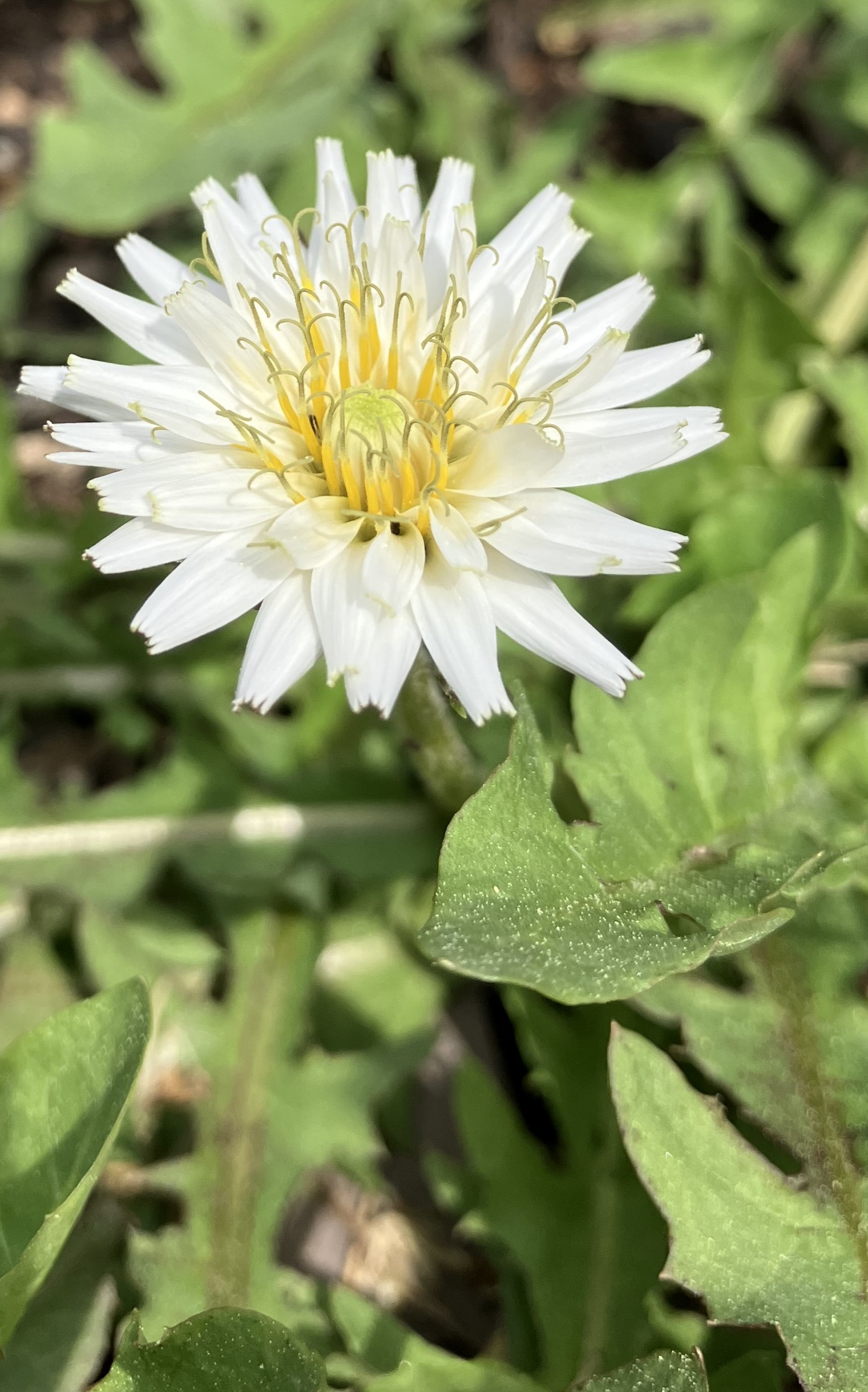
When growing dandelions for chicken snacks and salad greens, it’s fun to try unusual varieties. Last year we flowered the pink dandelion (Taraxacum pseudoroseum), and this year white dandelions are getting started. Taraxacum pseudoroseum wasn’t very pink, but T. albidum is definitely a more pure white. Since dandelions can be persistent weeds, we keep them in pots and clip off inflorescences before the seeds are mature.
4. Camellia ‘Rosehill Red’
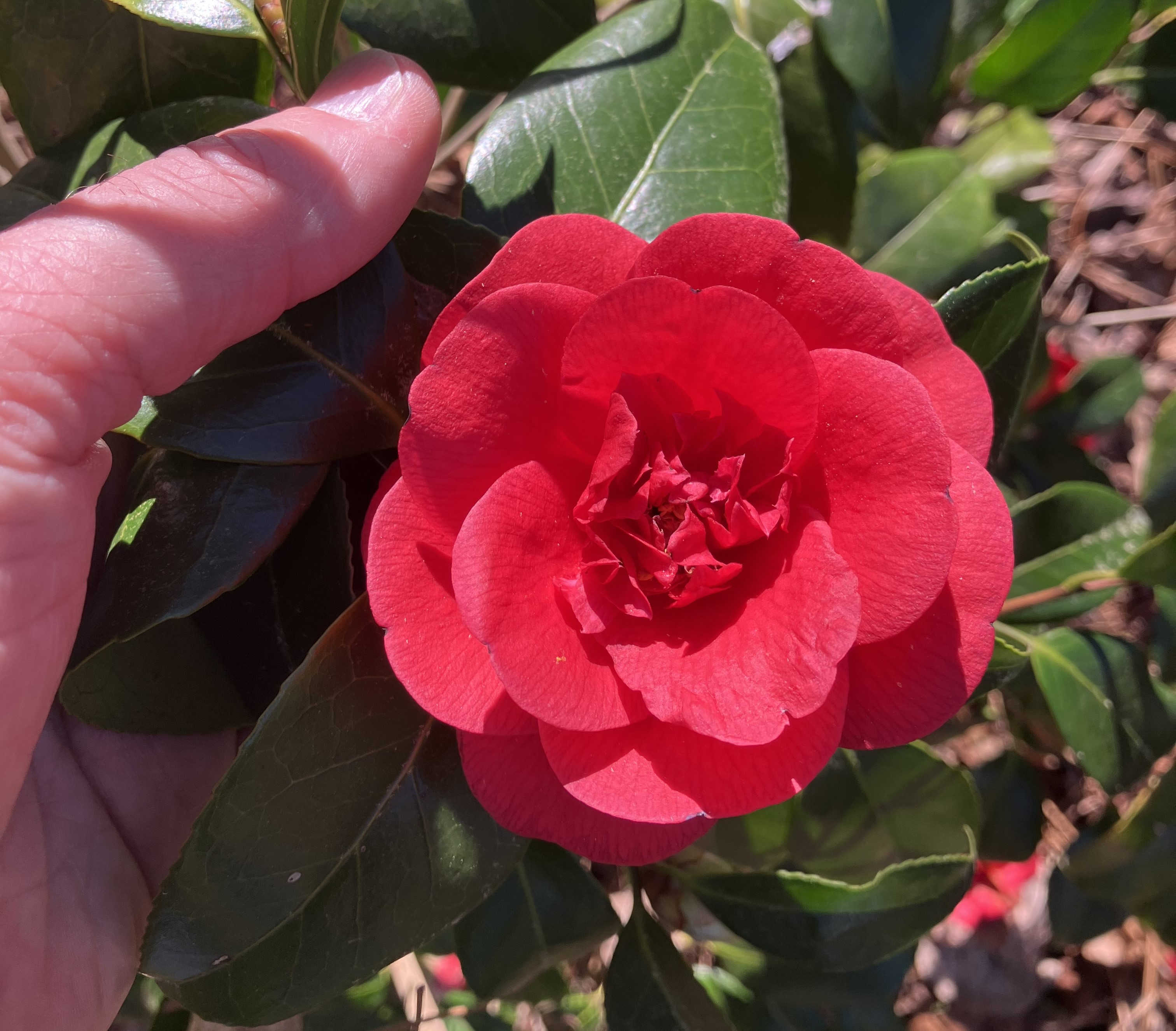
Not much to say about this; it’s a very nice Camellia japonica cultivar. I tend not to like double and semi-double flowers, but these ones aren’t too fussy looking. It is beside Camellia ‘Yuletide’ which flowers in early winter, so I get an extended shot of red color in that part of the garden.
5. Muscari armeniacum ‘Touch of Snow’
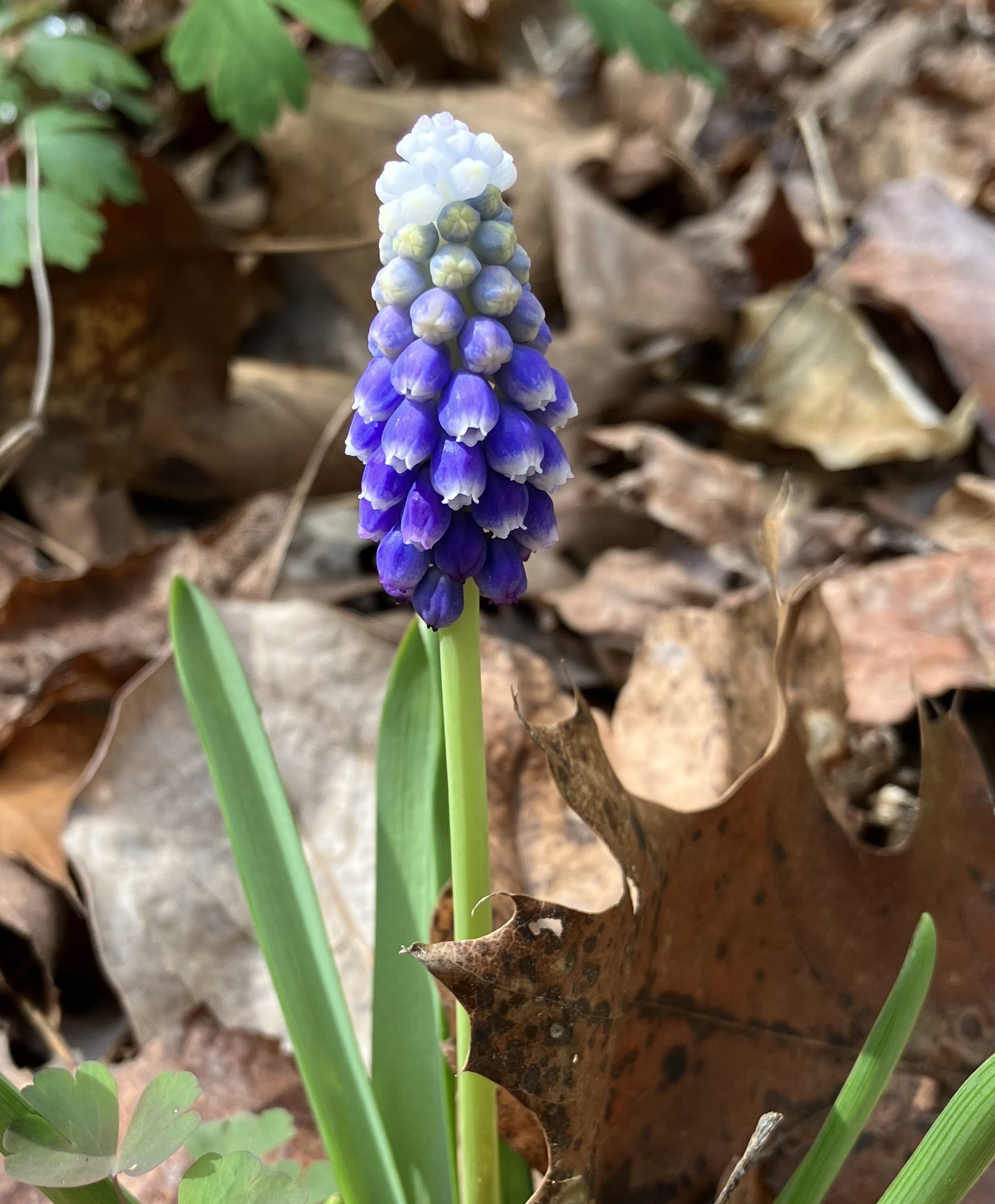
These little guys that I planted last autumn are a little difficult to find in the garden, but they’ll become more obvious as they start to form clumps. They make a nice change from the more typical purple grape hyacinths.
6. Hyacinthus ‘Woodstock’
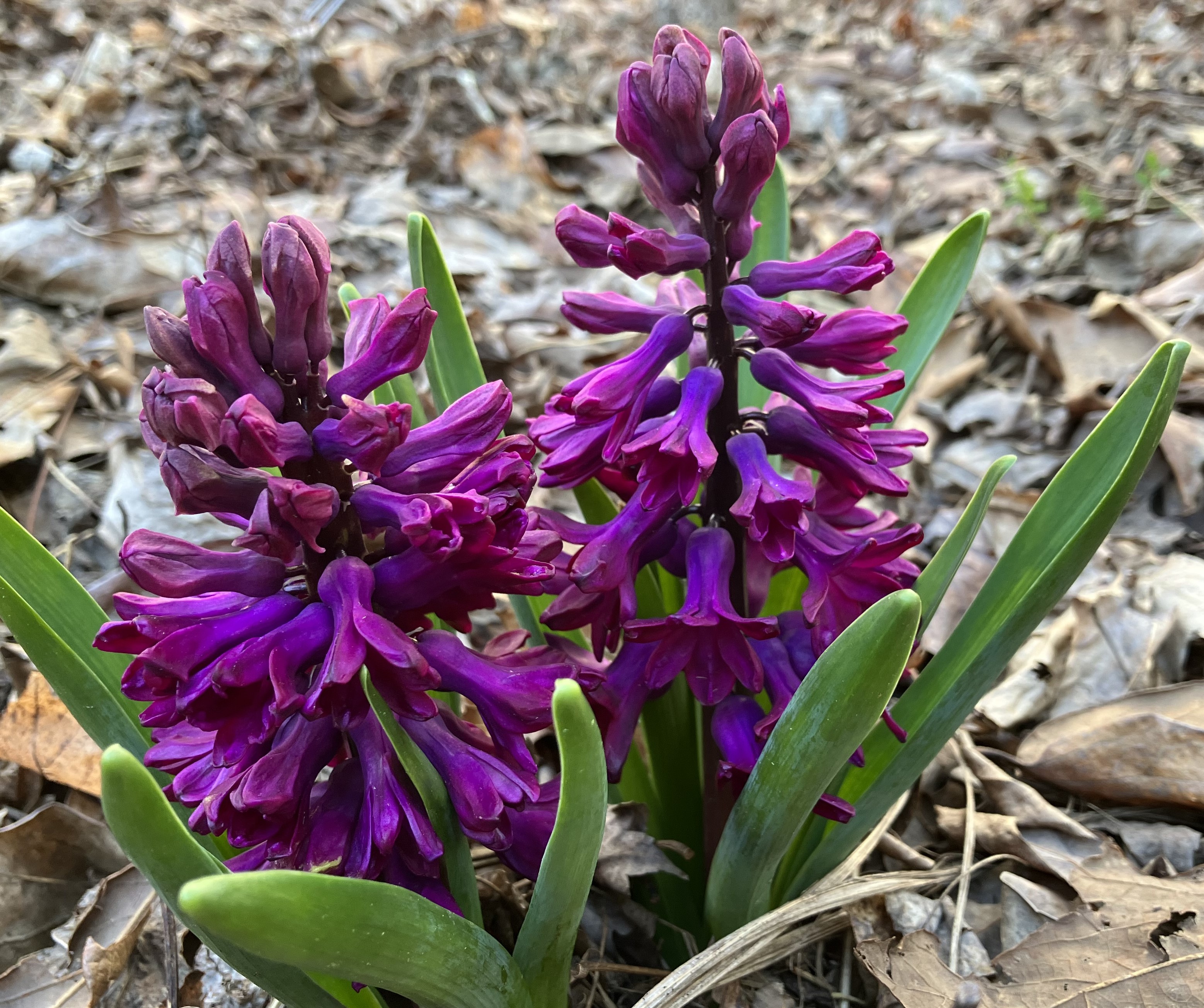
I had a little trouble finding six flowers that I hadn’t featured before, so I’ll slip in these hyacinths which actually flowered a couple of weeks ago. Like the Muscari ‘Touch of Snow’, I planted them last autumn, so this was my first look at the flowers. My wife was the one who picked them out of the catalog, but I very much like the intense magenta color which darkens to purple at the base of the flower. Quite possibly my favorite Hyacinth now.
Jim at Garden Ruminations is the host of Six on Saturday. Head over there to see his Six for this week and find links to the blogs of other participants.
